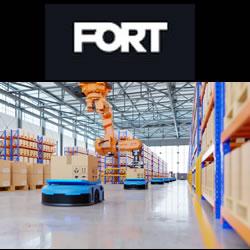Toshiba Launches a High Speed, Dual Polarity Input Photocoupler for Servo Motors and PLCs
Works with both plus and minus LED currents
TOKYO--Toshiba Corporation (TOKYO:6502) today announced that it has launched "TLP2391", a high-speed photocoupler for servo motors and programmable logic controllers (PLCs) which works with both plus and minus LED currents. Mass production is scheduled to start in December.
PLC applications accept one of two different polarity inputs: sink logic input and source logic input. The "TLP2391" supports both sink and source logic by combining two LEDs in inverse parallel, eliminating the need for a bridge circuit. The product supports 10Mbps high speed communications, twice as fast as other Toshiba dual input photocouplers1 allowing use in communications interfaces in industrial applications. The IC's 2.3mA low input current drive (@ VCC = 3.3V) and 1mA low supply current contribute to energy efficiency.
Applications
Programmable logic controllers (PLC), servo motors, and industrial automation equipment
Key Features of New Product
• Operating temperature: Topr = -40 to 125°C
• Supply voltage: VCC = 2.7 to 5.5V
• Supply current: ICC = 1mA
• Threshold input current:
IFHL = 2.3mA (VCC = 3.3V)
IFHL = 2.5mA (VCC = 5.0V)
• Propagation delay time: tpHL / tpLH = 100ns (max)
• Pulse width distortion: |tpHL-tpLH| = 30ns (max)
• Propagation delay skew: tpsk = 40ns (max)
Note:
[1]: Comparison with 5Mbps speed of Toshiba dual input photocouplers, "TLP2395" and "TLP2398".
For more information about the product, please visit:
http://www.semicon.toshiba.co.jp/info/lookup.jsp?pid=TLP2391&lang=en
Featured Product

Fort Robotics - Avoid Costly Downtime with Safety & Security for Machines
Machine safety and security are two critical components of any industrial operation. Our latest video explores this question and provides insights into how security measures can enhance machine safety. Nivedita Ojha, VP of Product at FORT, breaks down the key considerations when it comes to securing your machines and keeping your workers safe, explaining why there is no safety without security.
